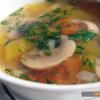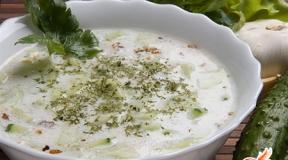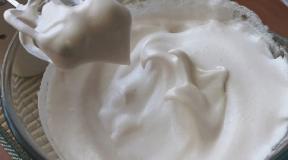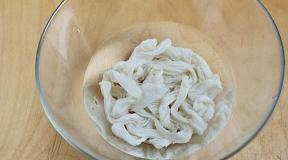Rovamycin for children: instructions for use. We treat infection with "Rovamycin Rovamycin 3,000,000 dosage for children
Bacterial infections can seriously affect a child's health. Modern pharmaceuticals offer various drugs for their treatment. But for children, an important factor is the safety of the medicine, which is provided by "Rovamycin" - a natural antibiotic.
Release form
In Russia, "Rovamycin" is produced in the form of tablets with various concentrations of the main active ingredient: 1.5 million IU and 3 million IU. The tablets are packed in a blister of 8 and 5 pieces, respectively. Each package of the drug contains 2 blisters, which ensures the minimum course of treatment with "Rovamycin".
Also in pharmacies "Rovamycin" is sold in the form of a mass for the preparation of a solution for intravenous injections. Each glass vial contains 1.5 million IU. Children are not prescribed intravenous injections.
In foreign countries, based on the active ingredient, they also produce rectal suppositories and a suspension for oral administration.

Composition
The main active ingredient of Rovamycin is spiramycin. This substance is a natural antibiotic produced by special bacteria. They were first discovered in the 50s of the last century in the soil in the south of France. Studies have shown that the substance can inhibit the activity of bacteria, and for more than 60 years, drugs have been produced on the basis of spiramycin.
As auxiliary components in tablets, special forms of silicon, cellulose, starch are used, ensuring the preservation of the effectiveness of the drug during the shelf life.
The tablet shell contains a titanium-based food coloring, which is also widely used in the manufacture of confectionery, as well as macrogol 6000, a common base for tablets and medicinal ointments.

Operating principle
Spiramycin acts on bacteria and microbes, inhibiting protein synthesis in their cells. This action is called bacteriostatic. Deprived of the ability to multiply, bacteria are not able to spread their negative effects on healthy human cells. The development of the disease first slows down, then stops, and after the death of bacteria that have already entered the body, the person recovers.
The advantage of spiramycin is that each of its structures is capable of suppressing several disease-causing cells at once, which provides a faster treatment effect. Also a plus is that the natural antibiotic can accumulate in the cells of bacteria.


Indications
"Rovamycin", created on the basis of spiramycin, is effective against bacterial infections caused by strains sensitive to its effects. Therefore, "Rovamycin" is prescribed for pneumonia, including atypical, acute or chronic bronchitis, various diseases nasopharynx, for example, tonsillitis, otitis media, sunusitis. The drug is effective for some skin infections, including dermatoses, as well as in dentistry.
For the first time spiramycin has shown its effectiveness in the treatment of toxoplasmosis in pregnant women. Research has shown that the treatment does not harm the mother and baby. Later, it began to be used for the congenital form of this disease in children.
Currently, "Rovamycin" is also prescribed to people who have been in contact with patients with meningitis during the latent phase of the disease to prevent infection with this dangerous infection... Rovamycin is successfully used to treat people who are carriers of bacterial infections, such as whooping cough and diphtheria.
Shown "Rovamycin" also in the treatment of bacterial infections of the skin and bones.

At what age is it prescribed?
It is necessary to use "Rovamycin" for the treatment of children, focusing not on the age, but on the weight of the child. The dosage of the medicine varies with a child weighing up to 10 kg, from 10 to 20 kg and more than 20 kg.
According to the World Health Organization, both boys and girls are normal on average 10 kg between the ages of 1 and 2 years, and 20 kg at 6 years of age. However, this is a very average figure. In the WHO table, 20 kg is indicated as a very high weight for three-year-old children.
Therefore, when prescribing and using "Rovamycin" in children, it is necessary to be guided, first of all, by the weight of the child.


Contraindications
Children are not prescribed intravenous injections of the drug. Use with caution when renal failure... Treatment with "Rovamycin" is contraindicated in the presence of individual sensitivity to the main component.

Side effects
When taking the drug, children may experience such undesirable symptoms as nausea, vomiting, diarrhea. In some cases, skin rashes and itching appear.
A more thorough examination can reveal a change in indicators on an electrocardiogram, a lack of platelets in the blood, damage to the intestinal mucosa, difficulty in the outflow of bile and its accumulation in the liver.
The appearance of any symptom that can be associated with taking the drug requires a suspension of treatment and consultation with a doctor.
Instructions for use
The daily dosage of the drug in children depends on such an individual indicator as the child's body weight. If it weighs less than 10 kg, the dosage should not exceed 375-750 thousand IU, divided by 2 times.
For children, whose weight is in the range from 10 to 20 kg, the daily dosage is assigned 0.75-1.5 million IU. It is divided into two equal receptions. With a weight of more than 20 kg, 150 thousand IU are prescribed per one kilogram of body weight per day. The medicine is given in 3 doses.
In any case, children have the maximum permissible daily dose should not exceed 300 thousand IU per kilogram of weight. The tablets are taken either one hour before a meal or 2 hours after it, with plenty of clean water.




Overdose
Exceeding the permissible dose of "Rovamycin" was not noted in clinical practice... However, if the daily maximum has been exceeded, symptoms may occur. side effects, but in a more pronounced form.
In case of an overdose, the child undergoes symptomatic treatment, which is prescribed by the doctor, and the reception of "Rovamycin" is canceled.
Interaction with other drugs
During clinical trials, the presence of interaction between the tablets "Rovamycin" and "Erythromycin" was established. Most often, the latter is not prescribed for children under 14 years of age, but if the child still takes "Erythromycin" as prescribed by a doctor, then it is necessary either to cancel his intake, or replace "Rovamycin" with a drug with another active ingredient.
Also, with caution, treatment with "Rovamycin" is prescribed simultaneously with preparations containing ergot alkaloids.

Terms of sale and storage
Rovamycin is an over-the-counter drug available over the counter in pharmacies.
The medicine has a long shelf life: for tablets with a dosage of 1.5 IU, it is 3 years, with a dosage of 3 million IU - 4 years. In order for the drug to remain effective throughout the entire shelf life, it must be stored at a temperature not exceeding 25 C in a dry place.
It is important that the storage area of "Rovamycin" is out of reach of children.
Rovamycin: instructions for use and reviews
Rovamycin is an antibacterial agent of the macrolide group.
Release form and composition
Dosage forms of Rovamycin:
- : round biconvex, white or white with a cream shade, engraved on one side “RPR 107” (tablets of 1.5 million IU) or “ROVA 3” (tablets of 3 million IU); cross-section - white or white with a cream shade (1.5 million international units (IU): 8 pieces in a blister, 2 blisters in a cardboard box; 3 million IU each: 5 pieces in a blister, in a cardboard box pack of 2 blisters);
- lyophilisate for the preparation of a solution for intravenous (iv) administration: a mass with a porous structure, from yellowish to white (1.5 million IU each in glass transparent bottles, 1 bottle in a cardboard box).
1 tablet contains:
- active substance: spiramycin - 1.5 million IU (engraved with "RPR 107") and 3 million IU (with engraved "ROVA 3");
- auxiliary components: pregelatinized corn starch, colloidal silicon dioxide, hyprolose, magnesium stearate, microcrystalline cellulose, croscarmellose sodium;
- shell: hypromellose, macrogol 6000, titanium dioxide (E171).
1 bottle contains:
- active substance: spiramycin - 1.5 million IU;
- auxiliary components: adipic acid.
Pharmacological properties
Pharmacodynamics
Spiramycin is an antibiotic from the macrolide group, the antibacterial effect of which is explained by the inhibition of protein synthesis in microbial cells due to binding to the 508-subunit of the ribosome.
The following microorganisms are highly sensitive to spiramycin [minimum inhibitory concentration (MIC) less than 1 mg / l]:
- anaerobes: Propionibacterium acnes, Actinomyces spp., Prevotella spp., Bacteroides spp., Porphyromonas spp., Eubacterium spp., Peptostreptococcus spp., Mobiluncus spp .;
- gram-negative aerobes: Moraxella spp., Bordetella pertussis, Legionella spp., Campylobacter spp., Branhamella catarrhalis;
- gram-positive aerobes: Streptococcus pyogenes, Streptococcus B, Streptococcus pneumoniae, unclassified streptococcus, Bacillus cereus, Staphylococcus meti-R (methicillin-resistant staphylococci), Staphylococcus metiocillin, Staphylococcus diphocyteris (Staphylococcus susceptible) spp .;
- different: Toxoplasma gondii, Borrelia burgdorferi, Treponema pallidum, Chlamydia spp., Mycoplasma pneumoniae, Leptospira spp., Coxiella spp.
Moderate sensitivity to spiramycin (the antibiotic demonstrates moderate activity in vitro at concentrations of Rovamycin in the inflammation focus of more than 1 mg / l, but less than 4 mg / l) are shown by the following microorganisms: anaerobes (Clostridium perfringens), gram-negative aerobes (Neisseria gonorrhoeae), various (Ureaplasma urealyticum).
The following microorganisms are considered resistant to spiramycin (MIC more than 4 mg / L, at least 50% of strains demonstrate resistance): anaerobes (Fusobacterium spp.), Gram-negative aerobes (Pseudomonas spp., Acinetobacter spp., Haemophilus spp., Enterobacteria spp.), gram-positive aerobes (Nocardia asteroides, Corynebacterium jeikeium), various (Mycoplasma hominis).
The teratogenic effect of spiramycin has not been proven, therefore, its use in pregnant women is allowed. When using Rovamycin in the first trimester of pregnancy, there is a decrease in the risk of transmitting toxoplasmosis to the fetus from 25% to 8%, in the second trimester - from 54% to 19%, in the third trimester - from 65% to 44%.
Pharmacokinetics
Spiramycin is absorbed quickly, but not completely, and the range of the approximate value of the degree of absorption is quite wide: from 10% to 60%. Food intake does not affect this pharmacokinetic indicator.
After oral administration of 6 million IU of spiramycin, its maximum plasma content reaches approximately 3.3 μg / ml. The substance does not penetrate cerebrospinal fluid but stands out with breast milk... Spiramycin binds to plasma proteins to a small extent (about 10%).
After intravenous administration 1.5 million IU of Rovamycin by infusion over 1 hour, the maximum plasma concentration is 2.3 μg / ml. The half-life is approximately 5 hours. With the introduction of 1.5 million IU of spiramycin intravenously every 8 hours, the equilibrium concentration is reached by the end of the second day (C min - about 0.5 μg / ml, C max - about 3 μg / ml).
The substance penetrates the placental barrier (its content in the fetal blood is about 50% of the concentration of spiramycin in the mother's blood). Its level in placental tissues is about 5 times higher than the corresponding indicator in blood serum. The volume of distribution is about 383 liters.
Spiramycin is different high degree penetration into body tissues and saliva (concentration in bones is 5-100 μg / g, lungs - 20-60 μg / g, infected nasal sinuses - 75-110 μg / g, tonsils - 20-80 μg / g). 10 days after the end of therapy, the concentration of spiramycin in the kidneys, liver and spleen is 5–7 μg / g.
Spiramycin penetrates and accumulates in phagocytes (alveolar and peritoneal macrophages, monocytes and neutrophils). In humans, the content of this compound inside phagocytes is quite high. These properties determine the effect of spiramycin on intracellular bacteria.
Spiramycin is metabolized in the liver, forming active metabolites with an unexplored chemical structure. Its half-life from blood plasma is approximately 8 hours. The substance is excreted from the body mainly with bile (concentrations in bile are 15-40 times higher than those in serum). About 10% of the administered dose is excreted through the kidneys. The amount of spiramycin excreted in feces is extremely small.
Indications for use
Film-coated tablets
The use of Rovamycin in the form of tablets is indicated for infectious and inflammatory diseases caused by microorganisms sensitive to spiramycin:
- acute form of chronic bronchitis;
- chronic and acute forms pharyngitis caused by beta-hemolytic streptococcus A ( alternative therapy beta-lactam antibiotics, including those with contraindications to their use);
- chronic and acute tonsillitis;
- stomatitis, glossitis and other infectious pathologies of the oral cavity;
- acute sinusitis (with contraindications to the use of beta-lactam antibiotics);
- acute bronchitis bacterial etiology, which is a complication of acute viral bronchitis;
- atypical pneumonia caused by Chlamydia pneumoniae, Mycoplasma pneumoniae, Chlamydia trachomatis, Legionella spp. bacteria, or suspicion of it (in the absence or presence of risk factors for an unfavorable outcome and with any form of severity);
- community-acquired pneumonia in the absence of severe clinical symptoms, risk factors for an unfavorable outcome, clinical signs pneumonia of pneumococcal etiology;
- infectious dermohypoderma (including erysipelas), secondary infected dermatosis, impetigo, impetiginization, ecthyma, erythrasma and other infections of the skin and subcutaneous tissue;
- genital infections of non-gonococcal etiology;
- toxoplasmosis, including during pregnancy;
- periodontium and other infections connective tissue and musculoskeletal system.
In addition, the tablets are prescribed for the prevention of recurrence of rheumatism in patients who are allergic to beta-lactam antibiotics.
Rovamycin is taken for the prevention (not for treatment) of meningococcal meningitis by eradication of Neisseria meningitidis from the nasopharynx in patients (with contraindications to rifampicin) who are in contact before hospitalization (within 10 days) with persons who have excreted Neisseria meningitidis with saliva into the environment before leaving quarantine and after treatment.
Lyophilisate for the preparation of a solution for intravenous (IV) administration
The use of lyophilisate is indicated for adult patients in the treatment of infectious pathologies of the lower respiratory tract:
- acute pneumonia;
- infectious-allergic bronchial asthma;
- exacerbation of chronic bronchitis.
Contraindications
- deficiency of glucose-6-phosphate dehydrogenase (due to the risk of acute hemolysis);
- period of breastfeeding;
- hypersensitivity to the components of the drug.
Age contraindications:
- tablets: 1.5 million IU each in children under 6 years old, 3 million IU each - up to 18 years old;
- lyophilisate: up to 18 years old.
According to the instructions, it is recommended to prescribe Rovamycin with caution to patients with hepatic insufficiency, obstruction bile ducts.
In addition, lyophilisate should not be used in patients with an extended QT interval simultaneously with medicines causing ventricular tachycardia of the "pirouette" type: hydroquinidine, quinidine, disopyramide (class IA antiarrhythmics), sotalol, amiodarone, dofetilide, ibutilide (class III antiarrhythmics), chlorpromazine, thioridazine, levomepromazine, ciameri-luperazine, triferoperaidol (phenothiazine antipsychotics), tiapride, sulpiride, sultopride, amisulpride (antipsychotics of the benzamide group), pentamidine, halofantrine, moxifloxacin, bepridil, diphemanil, cisapride, mizolastine, with intravenous administration of erythromycin and vincamine.
With caution, Rovamycin lyophilisate should be prescribed with concomitant therapy with drugs that affect the development of bradycardia, ergot alkaloids, drugs that reduce the concentration of potassium in the blood serum.
Instructions for the use of Rovamycin: method and dosage
Film-coated tablets
Rovamycin tablets are taken orally, swallowed whole and washed down with the required amount of water.
- adults: treatment - 6-9 million IU (4-6 tablets of 1.5 million IU or 2-3 tablets of 3 million IU) divided into 2-3 doses; prevention of meningococcal meningitis - 3 million IU 2 times a day, course - 5 days;
- children over 6 years old: treatment - at the rate of 150-300 thousand IU per 1 kg of body weight, the dose is divided into 2-3 doses per day; prevention of meningococcal meningitis - 75 thousand IU per 1 kg of child's weight 2 times a day, course - 5 days.
Patients under 18 years of age should be prescribed only Rovamycin tablets of 1.5 million IU.
The maximum permissible daily dose: adults and children weighing over 30 kg - 9 million IU, children - 300 thousand IU per 1 kg.
Patients with functional impairment of the kidneys do not need dose adjustment.
Lyophilisate for preparation of solution for intravenous administration
The lyophilisate is used by slow intravenous drip.
To prepare the infusion solution, the contents of the vial are dissolved in 4 ml of water for injection, then the resulting solution is mixed with 100 ml of 5% dextrose (glucose), after which the finished solution is injected for 1 hour or more. At room temperature Rovamycin solution is stable for 12 hours.
The dose and period of treatment is prescribed by the doctor, taking into account the sensitivity of the microflora, the severity and clinical features the course of the infectious process.
As soon as the patient's condition allows Rovamycin to be taken orally, the intravenous administration is canceled.
Side effects
- the immune system: itchy skin, rash, urticaria; very rarely - anaphylactic shock, angioedema; in some cases - Shenlein-Henoch purpura, vasculitis;
- gastrointestinal tract: nausea, diarrhea, vomiting; very rarely - pseudomembranous colitis;
- hepatobiliary system: very rarely - mixed or cholestatic hepatitis, impaired liver function tests;
- cardiovascular system: very rarely - prolongation of the QT interval on the electrocardiogram (ECG);
- nervous system: very rarely - transient paresthesia;
- hematopoietic system: very rarely - acute hemolysis;
- dermatological reactions: very rarely - acute generalized exanthematous pustulosis.
In addition, taking Rovamycin tablets can cause disturbances from gastrointestinal tract in the form of ulcerative esophagitis, acute colitis, in patients with AIDS - acute damage to the intestinal mucosa against the background of high doses of spiramycin.
When treated with lyophilisate, in rare cases, moderate painful sensitivity occurs along the course of the vein when the solution is injected.
Overdose
Cases of overdose of Rovamycin are unknown, however, its probable symptoms when taking the drug in high doses include diarrhea, nausea and vomiting. In newborns treated with high doses of spiramycin, or in patients who received intravenous Rovamycin and who are prone to lengthening the QT interval, there is sometimes an increase in the QT interval, which disappears after discontinuation of treatment. In case of an overdose of spiramycin, regular ECG monitoring is recommended to determine the duration of the QT interval, especially in the presence of serious risk factors (combination with drugs that provoke the development of ventricular tachycardia such as "pirouette" and / or lengthen the duration of the QT interval, congenital prolongation of the QT interval, hypokalemia).
There is no specific antidote. If you suspect an overdose of Rovamycin, symptomatic therapy is recommended.
special instructions
Treatment of patients with liver pathologies must be accompanied by periodic monitoring of its function.
If at the beginning of the use of Rovamycin, generalized erythema and pustules, accompanied by elevated temperature body, the drug should be discontinued, since this condition may indicate acute generalized exanthematous pustulosis (in this case, the use of spiramycin is contraindicated in the patient).
The use of IU 3 million tablets in children is not recommended due to the risk of airway obstruction caused by swallowing large diameter tablets.
When signs appear allergic reaction the introduction of the solution should be stopped immediately.
When infusion requires control of blood glucose concentration in patients diabetes mellitus(due to the use of 5% dextrose).
The decision about the patient's ability to drive a vehicle and perform other potentially dangerous species activity is taken by the attending physician, taking into account the severity of the patient's condition.
Rovamycin has no effect on the ability to manage vehicles and mechanisms.
Application during pregnancy and lactation
If necessary, Rovamycin is prescribed during pregnancy. Long-term experience of using spiramycin during this period does not confirm the presence of fetotoxic or teratogenic properties in it.
If the course of drug treatment must be completed during lactation, breast-feeding should be canceled immediately, since spiramycin passes into breast milk.
Drug interactions
With the simultaneous use of Rovamycin:
- levodopa - reduces its concentration in blood plasma (correction of its dose and clinical monitoring is required);
- fluoroquinolones, some cephalosporins, cyclins, macrolides, a combination of sulfamethoxazole and trimethoprim, other groups of antibiotics - increase the activity indirect anticoagulants... The risk factors predisposing a change in the indicator of the blood coagulation system include the type of infection, the severity of the inflammatory reaction, general state and the patient's age.
With concomitant therapy with Rovamycin in the form of a lyophilisate with slow calcium channel blockers, diltiazem, verapamil, beta-blockers, clonidine, guanfacine, digitalis glycosides, cholinesterase inhibitors, chlorinesterase inhibitors, chlorinesterase inhibitors, chloraminosilicidal drugs, ambulatory drugs, pyrolysis drugs reducing the concentration of potassium in the blood (potassium-excreting diuretics, intravenous administration of amphotericin B, stimulating laxatives, glucocorticosteroids, tetracosactide, mineralocorticosteroids) - the risk of ventricular arrhythmias increases (it is recommended to eliminate hypokalemia before using spiramycin, and during treatment, to control the level of electrolytes blood, ECG).
Analogs
Analogues of Rovamycin are: Sumamed, Spiramycin-vero, Erythromycin, Azithromycin, Vilprafen.
Terms and conditions of storage
Keep out of the reach of children.
Store at temperatures up to 25 ° C, the lyophilisate should be protected from light.
Shelf life: tablets with an engraving "RPR 107" - 3 years, "ROVA 3" - 4 years; lyophilisate - 1.5 years.
Rovamycin is an antibiotic from the macrolide group with bacteriostatic action.
Release form and composition
Dosage forms of Rovamycin:
- Film-coated tablets: 1.5 million international units (IU) - biconvex, round, white, cross-section - white, engraved "RPR 107" on one side; 3 million IU - biconvex, round, the color of the shell and on the cross-section - white with a cream shade, on one side engraving "ROVA 3" (1.5 million IU - 8 pcs. In a blister of PVC / aluminum foil, in cardboard box 2 blisters; 3 million IU - 5 pcs. in a blister of PVC / aluminum foil, in a cardboard box 2 blisters);
- Lyophilisate for the preparation of a solution for intravenous administration: porous mass from white to slightly yellowish (1.5 million IU in a transparent glass vial (type I), sealed with a rubber stopper and a crimped aluminum cap, 1 vial in a cardboard box).
1 tablet contains:
- Active substance: spiramycin - 1.5 or 3 million IU;
- Additional components: microcrystalline cellulose, croscarmellose sodium, hyprolose, pregelatinized corn starch, magnesium stearate, colloidal silicon dioxide; film shell: macrogol, titanium dioxide (E171), hypromellose.
1 bottle with lyophilisate contains:
- Active substance: spiramycin - 1.5 million IU;
- Additional components: adipic acid.
Indications for use
- Acute sinusitis (if there are contraindications to the use of beta-lactam antibiotics);
- Acute bronchitis due to bacterial infection caused by acute viral bronchitis;
- Chronic and acute pharyngitis caused by beta-hemolytic streptococcus A (if there are contraindications to taking beta-lactam antibiotics or the inability to use them);
- Chronic and acute tonsillitis;
- Chronic bronchitis in the acute phase;
- Pneumonia caused by atypical pathogens (Mycoplasma pneumoniae, Chlamydia trachomatis, Chlamydia pneumoniae, Legionella spp.) Diagnosed or suspected;
- Community-acquired pneumonia (in the absence of clinical signs of pneumococcal etiology, severe symptoms and threats of an unfavorable outcome);
- Genital infections of a non-gonococcal nature;
- Infections of the subcutaneous tissue and skin (including infectious dermohypoderma (especially erysipelas), ecthyma, impetiginization, impetigo, erythrasma, secondary infected dermatoses);
- Infections oral cavity(including glossitis, stomatitis);
- Infections of the connective tissue and musculoskeletal system (including the periodontium);
- Toxoplasmosis (including during pregnancy).
Also, the agent is prescribed for the prevention of recurrence of rheumatism in patients with hypersensitivity to beta-lactam antibiotics.
For the prevention (excluding treatment) of meningococcal meningitis, Rovamycin is used for the eradication of Neisseria meningitidis from the nasopharynx (in case of contraindications to taking rifampicin) in patients after completing the course and before leaving quarantine, as well as in patients who are in contact with sick persons.
- Acute pneumonia;
- Chronic bronchitis in the acute stage;
- Infectious-allergic bronchial asthma.
Contraindications
- Deficiency of the enzyme glucose-6-phosphate dehydrogenase (due to the possible development of acute hemolysis);
- Breastfeeding period;
- Age up to 6 years - for tablets 1.5 million IU, up to 18 years - for tablets 3 million IU and lyophilisate;
- Hypersensitivity to the components of the product.
Additionally for the lyophilisate:
- The presence of lengthening of the QT interval (acquired or congenital);
- Combination with drugs, which can lead to the appearance of ventricular arrhythmias of the "pirouette" type: some phenothiazine antipsychotics (pyluside, droperidol, haloperidol, cyamemazine, trifluoperazine, levomepromazine, chlorpromazine, thioridazine), antipsychotics of the benzoprimidazine group, saprylprylpridzamide drugs, siapride, amyloperidol class (disopyramide, hydroquinidine, quinidine), class III (ibutilide, dofetilide, sotalol, amiodarone), moxifloxacin, pentamidine, halofantrine, as well as drugs such as vincamine and erythromycin (administered intravenously), mizolastine, diphemanilide, cisapride, beemanil.
Rovamycin is used with extreme caution for obstruction of the bile ducts, liver failure, in combination (for a lyophilisate) with drugs that reduce the level of potassium in the blood serum, causing bradycardia, with ergot alkaloids.
During pregnancy, the drug is approved for use according to indications (fetotoxic or teratogenic effects have not been identified). If it is necessary to prescribe the drug during lactation, it is necessary to stop breastfeeding, due to the possible penetration of spiramycin into breast milk.
Method of administration and dosage
Film-coated tablets
The tablets are taken orally with plenty of water.
Adults are prescribed 6-9 million IU of Rovamycin per day (4-6 tablets of 1.5 million IU or 2-3 tablets of 3 million IU) in 2-3 doses. Children and adolescents over 6 years old are recommended to take only 1.5 million IU tablets, the dose may be 150-300 thousand IU per 1 kg of body weight per day (but not more than 6-9 million IU), divided by 2 3 receptions.
The maximum permissible daily dose for adults is 9 million IU, for children - 300 thousand IU per 1 kg of body weight, but not exceeding 9 million IU with a child weighing over 30 kg.
In order to prevent meningococcal meningitis for 5 days, twice a day, adults take 3 million IU, children - 75 thousand IU per 1 kg of body weight.
In the presence of functional disorders renal associated with insignificant renal excretion, dose adjustment of spiramycin is not required.
Lyophilisate for preparation of solution for intravenous administration
A solution prepared from a lyophilisate is administered intravenously only to adult patients.
Slow intravenous infusion of 1.5 million IU is carried out every 8 hours, the daily dose is 4.5 million IU, with severe infections the dose may be doubled.
The lyophilisate contained in the vial is dissolved in 4 ml of injection water, and then diluted in at least 100 ml of 5% dextrose (glucose) solution. Rovamycin is injected slowly intravenously over 60 minutes.
As soon as the patient's condition allows, he is transferred to oral administration.
The duration of therapy depends on the sensitivity of the microflora, the type of pathogen, the characteristics and severity of the infection, and is set by the attending physician individually.
The prepared solution is stable at room temperature for 12 hours.
Side effects
- Gastrointestinal tract: nausea, diarrhea, vomiting; extremely rare - pseudomembranous colitis; the frequency is unknown (when taken orally) - acute colitis, ulcerative esophagitis, when using high doses in connection with cryptosporidiosis in AIDS patients - damage to the intestinal mucosa (2 cases);
- Liver and biliary tract: very rarely - mixed or cholestatic hepatitis, abnormal liver function tests;
- Hematopoietic system: very rarely - acute hemolysis;
- Nervous system: isolated cases - transient paresthesia;
- Immune system: pruritus, urticaria, skin rash; very rarely - angioedema, anaphylactic shock; isolated cases - vasculitis, including Shenlein-Henoch purpura;
- Cardiovascular system: extremely rare - prolongation of the QT interval on the electrocardiogram (ECG);
- Skin and subcutaneous tissues: very rarely - acute generalized exanthematous pustulosis;
- Local reactions: general disorders and disorders at the injection site, moderate painful sensitivity along the vein.
Overdose cases of Rovamycin have not been reported.
Possible overdose symptoms: nausea, diarrhea, vomiting. In newborns who were treated with high doses of spiramycin, as well as in patients at risk of prolongation of the QT interval, after intravenous administration, there were cases of prolongation of the QT interval after the drug was discontinued.
In case of an overdose, an ECG observation is prescribed with the concomitant establishment of the duration of the QT interval, especially in patients with risk factors (congenital prolongation of the QT interval, hypokalemia, the simultaneous use of drugs that prolong the QT interval and provoke the development of ventricular tachycardia in the "pirouette" type). There is no specific antidote, the treatment is symptomatic.
special instructions
During the period of application of Rovamycin in the presence of liver diseases, it is necessary to monitor its functional state.
If, at the beginning of therapy, the patient has the appearance of pustules and generalized erythema, accompanied by a high body temperature, this may be a sign of acute generalized exanthematous pustulosis. With the development of such a reaction, the use of the drug must be canceled (both with monotherapy and in combination).
Intravenous infusions should be discontinued immediately if symptoms of any allergic reaction are observed.
When the solution is administered to patients with diabetes mellitus, due to the use of 5% dextrose as a solvent, it is required to control the blood glucose level.
Tablets at a dose of 3 million IU are not used in children because of the difficulty in swallowing them and the threat of airway obstruction due to the large diameter of the tablet.
Information confirming bad influence Rovamycin for the ability to drive a car or others complex mechanisms, are absent. At the same time, one should take into account the severity of the patient's condition, which can negatively affect the attention and speed of psychomotor reactions. The final decision on the possibility of driving vehicles and other mechanisms is made by the attending physician.
Drug interactions
With the intravenous infusion of a solution of Rovamycin with the simultaneous use of drugs that cause bradycardia (beta-blockers, verapamil, diltiazem, digitalis glycosides, guanfacine, clonidine, cholinesterase inhibitors: neostigmine, pyridostigmine, chlo- ridastamine, tacmininium, donvaeztigmine) that reduce the content of potassium in the blood (amphotericin B (intravenously), tetracosactide, potassium-excreting diuretics, glucocorticosteroids, mineralocorticoids, stimulant laxatives), the threat of ventricular arrhythmias, in particular of the "pirouette" type, is aggravated. Before starting the use of Rovamycin, it is required to eliminate hypokalemia, and during therapy it is recommended to monitor the clinical condition, electrolyte levels and ECG monitoring.
Spiramycin inhibits the absorption of carbidopa, thereby reducing the plasma concentration of levodopa. With this combination, clinical monitoring and, if necessary, correction of levodopa doses are necessary.
When using antibiotics, it is possible to increase the activity of indirect anticoagulants.
Terms and conditions of storage
Store at a temperature not exceeding 25 ° C, protected from light, out of reach of children.
Shelf life: lyophilisate - 1.5 years; tablets 1.5 million IU - 3 years; tablets 3 million IU - 4 years.
Name:
Rovamycin (Rovamycin)
Pharmacological
action:
Macrolide antibiotic.
The mechanism of antibacterial action is due to inhibition of protein synthesis in a microbial cell due to binding to the 50S-subunit of the ribosome.
Sensitive microorganisms (MIC<1 мг/л): грамположительные аэробы - Bacillus cereus, Corynebacterium diphtheriae, Enterococcus spp., Rhodococcus equi, Staphylococcus spp. (метициллин-чувствительные и метициллин-резистентные штаммы), Streptococcus B, неклассицированный стрептококк, Streptococcus pneumoniae, Streptococcus pyogenes; грамотрицательные аэробы - Bordetella pertussis, Branhamella catarrhalis, Campylobacter spp., Legionella spp., Moraxella spp.; анаэробы - Actinomyces spp., Bacteroides spp., Eubacterium spp., Mobiluncus spp., Peptostreptococcus spp., Porphyromonas spp., Prevotella spp., Propionibacterium acnes; разные - Borrelia burgdorferi, Chlamydia spp., Coxiella spp., Leptospirа spp., Mycoplasma pneumoniae, Treponema pallidum, Toxoplasma gondii.
Moderately sensitive microorganisms (the antibiotic is moderately active in vitro at antibiotic concentrations in the inflammatory focus ≥ 1 mg / L, but< 4 мг/л): грамотрицательные аэробы - Neisseria gonorrhoeae; аэробы - Clostridium perfringens; разные - Ureaplasma urealyticum.
Resistant microorganisms (MIC> 4 mg / l; at least 50% of strains are resistant): gram-positive aerobes - Corynebacterium jekeium, Nocardia asteroides; gram-negative aerobes - Acinetobacter spp., Enterobacter spp., Haemophilus spp., Pseudomonas spp .; anaerobes - Fusobacterium spp .; different - Mycoplasma hominis.
Pharmacokinetics
Suction
The absorption of spiramycin is rapid, but incomplete, with great variability (from 10% to 60%). After taking Rovamycin orally at a dose of 6 million IU, Cmax of spiramycin in plasma is about 3.3 μg / ml. Food intake does not affect absorption.
Distribution
Plasma protein binding is low (approximately 10%). Vd approx. 383 l. The drug penetrates well into saliva and tissues (the concentration in the lungs is 20-60 μg / g, in the tonsils - 20-80 μg / g, in the infected sinuses - 75-110 μg / g, in the bones - 5-100 μg / g) ... 10 days after the end of treatment, the concentration of spiramycin in the spleen, liver, kidneys is 5-7 μg / g.
Spiramycin penetrates and accumulates in phagocytes (neutrophils, monocytes and peritoneal and alveolar macrophages).
In humans, drug concentrations inside phagocytes are quite high. This explains the effectiveness of spiramycin against intracellular bacteria.
Penetrates through the placental barrier (the concentration in the blood of the fetus is approximately 50% of the concentration in the serum of the mother). The concentrations in the tissue of the placenta are 5 times higher than the corresponding concentrations in the blood serum. Excreted in breast milk.
Spiramycin does not penetrate into the cerebrospinal fluid.
Metabolism and excretion
Spiramycin is metabolized in the liver to form active metabolites with an unknown chemical structure.
T1 / 2 from plasma is approximately 8 hours.
It is excreted mainly in the bile (the concentration is 15-40 times higher than in serum).
Renal excretion is about 10% of the administered dose.
The amount of the drug excreted through the intestines (with feces) is very small.
Indications for
application:
Infectious and inflammatory diseases caused by microorganisms sensitive to the drug:
- acute and chronic pharyngitis caused by beta-hemolytic streptococcus A (as an alternative to treatment with beta-lactam antibiotics, especially in the case of contraindications to their use);
- acute sinusitis (given the sensitivity of the microorganisms most often causing this pathology, the use of Rovamycin® is indicated in case of contraindications to the use of beta-lactam antibiotics);
- sharp and chronic tonsillitis caused by microorganisms sensitive to spiramycin;
- Acute bronchitis caused by a bacterial infection that developed after acute viral bronchitis;
- exacerbation of chronic bronchitis;
- community-acquired pneumonia in patients without risk factors for an unfavorable outcome, severe clinical symptoms and clinical signs of pneumococcal pneumonia etiology;
- pneumonia caused by atypical pathogens (such as Chlamydia pneumoniae, Chlamydia trachomatis, Mycoplasma pneumoniae, Legionella spp.) or suspicion of it (regardless of the severity and presence or absence of risk factors for an adverse outcome);
- infections of the skin and subcutaneous tissue, including impetigo, impetiginization, ecthyma, infectious dermohypoderma (especially erysipelas), secondary infected dermatoses, erythrasma;
- infections of the oral cavity (including stomatitis, glossitis);
- non-gonococcal infections of the genital organs;
- toxoplasmosis, incl. during pregnancy;
- infections of the musculoskeletal system and connective tissue, including the periodontium.
Prevention of recurrence of rheumatism in patients with allergy to beta-lactam antibiotics.
Eradication of Neisseria meningitidis from the nasopharynx (with contraindications to taking rifampicin) for the prevention (but not treatment) of meningococcal meningitis:
- in patients after treatment and before leaving quarantine;
- in patients who were in contact with persons who excreted Neisseria meningitidis with saliva into the environment within 10 days before hospitalization.
Mode of application:
A drug taken internally.
Adults appoint 2-3 tab. 3 million IU or 4-6 tab. 1.5 million IU (i.e. 6-9 million IU) per day. The daily dose is divided into 2 or 3 doses.
The maximum daily dose is 9 million IU.
In children and adolescents aged 6 to 18 years only 1.5 million ME tablets should be used.
In children over 6 years old the daily dose ranges from 150-300 thousand ME per kg of body weight, which is divided into 2 or 3 doses up to 6-9 million ME.
The maximum daily dose in children is 300 thousand IU per kg of body weight, but with a child's body weight of more than 30 kg, it should not exceed 9 million IU.
For the prevention of meningococcal meningitis, adults are prescribed 3 million IU 2 times / day for 5 days, children - 75 thousand IU / kg of body weight 2 times / day for 5 days.
Patients with impaired renal function due to insignificant renal excretion of spiramycin do not require dose adjustment.
The tablets are taken orally with plenty of water.
Side effects:
The following classification was used to indicate the frequency of occurrence of adverse reactions: very often (≥10%), often (≥ 1%,<10); нечасто (≥ 0.1%, <1%); редко (≥0.01%, <0.1%), очень редко, включая отдельные сообщения (<0.01%), частота неизвестна (по имеющимся данным частоту определить нельзя).
From the digestive system: nausea, vomiting, diarrhea; very rarely - pseudomembranous colitis (<0.01%); частота неизвестна - язвенный эзофагит, острый колит, острое повреждение слизистой оболочки кишечника у пациентов со СПИД при применении спирамицина в высоких дозах по поводу криптоспоридиоза (всего 2 случая).
From the liver and biliary tract: very rarely (<0.01%) - отклонение функциональных проб печени от нормальных показателей; холестатический или смешанный гепатит.
From the nervous system: very rarely (isolated cases) - transient paresthesia.
From the hematopoietic system: very rarely (<0.01%) - острый гемолиз.
On the part of the cardiovascular system: very rare - prolongation of the QT interval on the ECG.
From the immune system: skin rash, urticaria, itchy skin; very rarely (<0.01%) - ангионевротический отек, анафилактический шок; в отдельных случаях - васкулит, включая пурпуру Шенлейна-Геноха.
On the part of the skin and subcutaneous tissues: very rarely - acute generalized exanthematous pustulosis.
Contraindications:
Lactation period;
- deficiency of glucose-6-phosphate dehydrogenase (risk of acute hemolysis);
- children's age (for tablets 1.5 million IU - up to 6 years, for tablets 3 million IU - up to 18 years);
- hypersensitivity to the components of the drug.
Carefully Rovamycin is prescribed for obstruction of the bile ducts, with hepatic failure.
During treatment with the drug in patients with liver disease, it is necessary to periodically monitor its function.
If at the beginning of treatment, generalized erythema and pustules occur, accompanied by a high body temperature, acute generalized exanthematous pustulosis should be assumed; if such a reaction occurs, then the treatment should be discontinued, and further use of spiramycin, both in monotherapy and in combination, is contraindicated.
Use in pediatrics
3 million ME tablets are not used in children due to the difficulty of swallowing them by children due to the large diameter of the tablets and the danger of airway obstruction.
Influence on the ability to drive vehicles and control mechanisms
There is no information on the negative effect of the drug on the ability to drive and engage in other potentially hazardous activities.
However, one should take into account the severity of the patient's condition, which can affect the attention and speed of psychomotor reactions.
Therefore, the decision on the possibility of driving a car or engaging in other potentially hazardous activities in a particular patient should be made by the attending physician.
Interaction
other medicinal
by means of:
Inhibition of carbidopa absorption by spiramycin with a decrease in plasma levodopa concentration.
With the simultaneous appointment of spiramycin, clinical monitoring and dose adjustment of levodopa are necessary.
There have been numerous cases of increased activity of indirect anticoagulants in patients taking antibiotics.
The type of infection or the severity of the inflammatory reaction, the age and general condition of the patient are predisposing risk factors.
Under these circumstances, it is difficult to determine to what extent the infection itself or its treatment plays a role in modifying MHO.
However, with the use of certain groups of antibiotics, this effect is observed more often, in particular with the use of fluoroquinolones, macrolides, cyclins, a combination of sulfamethoxazole + trimethoprim, and some cephalosporins.
Pregnancy:
Rovamycin can be prescribed during pregnancy according to indications.
There is extensive experience in the use of the drug Rovamycin during pregnancy.
A decrease in the risk of transmission of toxoplasmosis to the fetus during pregnancy is noted from 25% to 8% when using the drug in the first trimester, from 54% to 19% in the second trimester and from 65% to 44% in the third trimester.
No teratogenic or fetotoxic effects were observed.
When prescribing the drug Rovamycin during lactation, breastfeeding should be discontinued, since spiramycin may penetrate into breast milk.
Overdose:
There are no known cases of spiramycin overdose.
Symptoms: possible - nausea, vomiting, diarrhea. Cases of prolongation of the QT interval after drug withdrawal were observed in newborns receiving high doses of spiramycin or after intravenous administration of spiramycin in patients predisposed to prolongation of the QT interval.
Treatment: in case of an overdose of spiramycin, an ECG observation is recommended to determine the duration of the QT interval, especially in the presence of risk factors (hypokalemia, congenital prolongation of the QT interval, the simultaneous use of drugs that prolong the duration of the QT interval and cause the development of ventricular tachycardia of the "pirouette" type). There is no specific antidote. If an overdose of spiramycin is suspected, symptomatic therapy is recommended.
Release form:
Rovamycin tablets, covered with a film sheath, white or white with a cream shade, round, biconvex, engraved with "RPR 107" on one side; cross-sectional view: white or white with a cream shade - 1.5 million IU - 16 pcs., 3 million IU - 10 pcs.
Lyophilisate Rovamycin for preparation of solution for intravenous administration- 1.5 million IU - in a bottle.
Storage conditions:
The drug should be stored out of the reach of children at a temperature not exceeding 25 ° C.
Shelf life for tablets 1.5 million IU - 3 years, for tablets 3 million IU - 4 years.
1 tablet of Rovamycin (1.5 million IU) contains:
- active substance: spiramycin - 1.5 million IU;
- Excipients: colloidal silicon dioxide - 1.2 mg, magnesium stearate - 4 mg, pregelatinized corn starch - 16 mg, hyprolose - 8 mg, croscarmellose sodium - 8 mg, microcrystalline cellulose - up to 400 mg.
Shell composition: titanium dioxide (E171) - 1.694 mg, macrogol 6000 - 1.694 mg, hypromellose - 5.084 mg.
Macrolide antibiotic
Release form, composition and packaging
white or cream white, round, biconvex, engraved with "RPR 107" on one side; cross-sectional view: white or white with a cream shade.
Excipients: colloidal silicon dioxide - 1.2 mg, magnesium stearate - 4 mg, pregelatinized corn starch - 16 mg, hyprolose - 8 mg, croscarmellose sodium - 8 mg, microcrystalline cellulose - up to 400 mg.
Shell composition: titanium dioxide (E171) - 1.694 mg, macrogol 6000 - 1.694 mg, hypromellose - 5.084 mg.
8 pcs. - blisters (2) - cardboard packs.
white with a cream shade, round, biconvex, engraved with "ROVA 3" on one side; cross-sectional view: white with a cream shade.
Excipients: colloidal silicon dioxide - 2.4 mg, magnesium stearate - 8 mg, pregelatinized corn starch - 32 mg, hyprolose - 16 mg, croscarmellose sodium - 16 mg, microcrystalline cellulose - up to 800 mg.
Shell composition: titanium dioxide (E171) - 2.96 mg, macrogol 6000 - 2.96 mg, hypromellose - 8.88 mg.
5 pieces. - blisters (2) - cardboard packs.
pharmachologic effect
An antibiotic from the macrolide group. The mechanism of antibacterial action is due to inhibition of protein synthesis in a microbial cell due to binding to the 50S-subunit of the ribosome.
Sensitive microorganisms(MIC4 mg / l; at least 50% of strains are resistant): gram-positive aerobes - Corynebacterium jekeium, Nocardia asteroides; gram-negative aerobes - Acinetobacter spp., Enterobacter spp., Haemophilus spp., Pseudomonas spp .; anaerobes - Fusobacterium spp .; different - Mycoplasma hominis.
Pharmacokinetics
Suction
The absorption of spiramycin is rapid, but incomplete, with great variability (from 10% to 60%). After taking Rovamycin orally at a dose of 6 million IU, Cmax of spiramycin in plasma is about 3.3 μg / ml. Food intake does not affect absorption.
Distribution
Plasma protein binding is low (approximately 10%). Vd approx. 383 l. The drug penetrates well into saliva and tissues (the concentration in the lungs is 20-60 μg / g, in the tonsils - 20-80 μg / g, in the infected sinuses - 75-110 μg / g, in the bones - 5-100 μg / g) ... 10 days after the end of treatment, the concentration of spiramycin in the spleen, liver, kidneys is 5-7 μg / g.
Spiramycin penetrates and accumulates in phagocytes (neutrophils, monocytes and peritoneal and alveolar macrophages). In humans, drug concentrations inside phagocytes are quite high. This explains the effectiveness of spiramycin against intracellular bacteria.
Penetrates through the placental barrier (the concentration in the blood of the fetus is approximately 50% of the concentration in the serum of the mother). The concentrations in the tissue of the placenta are 5 times higher than the corresponding concentrations in the blood serum. Excreted in breast milk.
Spiramycin does not penetrate into the cerebrospinal fluid.
Metabolism and excretion
Spiramycin is metabolized in the liver to form active metabolites with an unknown chemical structure.
T1 / 2 from plasma is approximately 8 hours. It is excreted mainly in the bile (concentration 15-40 times higher than in serum). Renal excretion is about 10% of the administered dose. The amount of the drug excreted through the intestines (with feces) is very small.
Indications
Infectious and inflammatory diseases caused by microorganisms sensitive to the drug:
Acute and chronic pharyngitis caused by beta-hemolytic streptococcus A (as an alternative to treatment with beta-lactam antibiotics, especially in the case of contraindications to their use);
Acute sinusitis (given the sensitivity of the microorganisms most often causing this pathology, the use of the drug Rovamycin is indicated in case of contraindications to the use of beta-lactam antibiotics);
Acute and chronic tonsillitis caused by microorganisms sensitive to spiramycin;
Acute bronchitis caused by a bacterial infection that developed after acute viral bronchitis;
Exacerbation of chronic bronchitis;
Community-acquired pneumonia in patients without risk factors for an unfavorable outcome, severe clinical symptoms and clinical signs of pneumococcal pneumonia etiology;
Pneumonia caused by atypical pathogens (such as Chlamydia pneumoniae, Chlamydia trachomatis, Mycoplasma pneumoniae, Legionella spp.) Or suspicion of it (regardless of the severity and presence or absence of risk factors for an adverse outcome);
Infections of the skin and subcutaneous tissue, including impetigo, impetiginization, ecthyma, infectious dermohypoderma (especially erysipelas), secondary infected dermatoses, erythrasma;
Oral cavity infections (including stomatitis, glossitis);
Non-gonococcal infections of the genital organs;
Toxoplasmosis, incl. during pregnancy;
Infections of the musculoskeletal system and connective tissue, including the periodontium.
Prevention of recurrence of rheumatism in patients with allergy to beta-lactam antibiotics.
Eradication of Neisseria meningitidis from the nasopharynx (with contraindications to taking rifampicin) for the prevention (but not treatment) of meningococcal meningitis:
In patients after treatment and before leaving quarantine;
In patients who were in contact with persons who excreted Neisseria meningitidis with saliva into the environment within 10 days before hospitalization.
Contraindications
Lactation period;
Deficiency of glucose-6-phosphate dehydrogenase (risk of acute hemolysis);
Children's age (for tablets 1.5 million IU - up to 6 years, for tablets 3 million IU - up to 18 years);
Hypersensitivity to the components of the drug.
WITH caution Rovamycin is prescribed for obstruction of the bile ducts, with hepatic failure.
Dosage
The drug is taken orally.
Adults appoint 2-3 tab. 3 million IU or 4-6 tab. 1.5 million IU (i.e. 6-9 million IU) per day. The daily dose is divided into 2 or 3 doses. The maximum daily dose is 9 million IU.
Have children and adolescents aged 6 to 18 years only 1.5 million ME tablets should be used.
Have children over 6 years old the daily dose ranges from 150-300 thousand ME per kg of body weight, which is divided into 2 or 3 doses up to 6-9 million ME. The maximum daily dose in children is 300 thousand IU per kg of body weight, but with a child's body weight over 30 kg it should not exceed 9 million ME
For prevention of meningococcal meningitis adults appoint 3 million IU 2 times / day for 5 days, children- 75 thousand IU / kg of body weight 2 times / day for 5 days.
Patients with impaired renal function due to the insignificant renal excretion of spiramycin, dose adjustment is not required.
The tablets are taken orally with plenty of water.
Side effects
The following classification was used to indicate the frequency of occurrence of adverse reactions: very often (≥10%), often (≥ 1%,
Antibiotic Rovamycin
A drug
Rovamycin- natural
antibiotic... Belongs to the group
macrolides... It has a long-term bacteriostatic effect on microorganisms due to a violation of protein synthesis in microbial cells.
Spiramycin, the active basic substance of Rovamycin, penetrates into tissue cells and creates a concentration there that is higher than in blood plasma. This can explain the effectiveness of the antibacterial action on intracellular microorganisms.
Streptococci, staphylococci (including Staphylococcus aureus), meningococcus, whooping cough bacillus, diphtheria bacillus, mycoplasma, chlamydia, toxoplasma, haemophilus influenzae, legionella, clostridia, leptospira and other microorganisms are sensitive to Rovamycin. Some types of streptococci, staphylococci, enterobacter, acinetobacter, etc. are insensitive to Spiramycin. There is a cross-resistance of microorganisms between Erythromycin and Rovamycin (Spiramycin).
After internal administration, Rovamycin is absorbed quickly, but incompletely (only 10-60%). It does not penetrate into the cerebrospinal fluid. It overcomes the placental barrier and creates a concentration in the tissue of the placenta that is 5 times higher than the content of the drug in the blood.
Rovamycin also penetrates well into other tissues: into the lungs, into bone tissue, into the tonsils, into the paranasal sinuses, into saliva. A high concentration of the drug remains in the tissues 10 days after the application of the antibiotic.
It is excreted from the body mainly with bile, and only about 10% with urine. Therefore, dose adjustment in patients with renal pathology is not required. The antibiotic also passes into breast milk.
Forms of issue
The release forms of Rovamycin are intended both for oral administration of the drug and for parenteral administration:
- Tablets of 1.5 million IU - 2 blisters of 8 tablets per pack.
- Tablets of 3 million IU - 2 blisters of 5 tablets per pack.
- Lyophilisate in vials of 1.5 million IU (dissolved for intravenous administration); attached ampoule with solvent 4 ml.
- Packages with granules for internal intake of 0.375; 0.75; 1.5 million IU; 10 sachets per pack.
Instructions for use of Rovamycin
It is advisable to prescribe Rovamycin when isolating the causative agent of an infectious-inflammatory process that is sensitive to this antibiotic.
Rovamycin inside it is used for the following pathologies:
- diseases of the ENT organs: tonsillitis, pharyngitis, inflammation of the paranasal sinuses; Rovamycin is prescribed as an alternative drug or in case of insensitivity to beta-lactam antibiotics and the presence of contraindications to them.
- Respiratory system infections: community-acquired acute pneumonia of non-pneumococcal etiology (including atypical pneumonia caused by chlamydia, mycoplasma, legionella or suspected atypical pneumonia, regardless of the severity of the process), acute and chronic bronchitis.
- Skin infections: erysipelas, ecthyma (staphylococcal lesion of all layers of the skin), impetigo (superficial infection of the skin), erythrasma (lesion of the stratum corneum of the skin in natural folds by corynebacteria), secondary infected dermatoses.
- Joint and bone infections.
- Periodontitis (complication of caries, inflammation of the tissues near the roots of the tooth).
- Infectious and inflammatory process in the genitourinary organs: urethritis, prostatitis.
- Sexually transmitted diseases (including extragenital and genital chlamydia), with the exception of gonorrhea.
- Toxoplasmosis (including pregnant women).
- Patients with intolerance to beta-lactam antibiotics.
For the treatment of meningococcal meningitis, Rovamycin is not used because it does not cross the blood-brain barrier and does not enter the cerebrospinal fluid.
For prophylactic purposes Rovamycin is prescribed:
- persons who have been in contact with a patient with meningococcal infection during the last 10 days before the onset of the disease;
- carriers of meningococcus if they have contraindications to Rifampicin.
Rovamycin is also used to prevent exacerbations of rheumatism in case of a patient's allergy to Penicillin.
Intravenous administration Rovamycin is used to treat diseases of the respiratory tract (upper and lower sections) in adults: acute pneumonia, chronic bronchitis and pneumonia, bronchial asthma (infectious dependent).
Contraindications
- Individual intolerance to spiramycin or other components of the drug;
- breast-feeding;
- deficiency of the enzyme glucose-6-phosphate dehydrogenase;
- age up to 3 years - tablets with 1.5 million IU are contraindicated and up to 18 years old - tablets with 3 million IU are contraindicated;
- intravenous administration of the drug is contraindicated in patients with prolongation of the QT interval on the electrocardiogram.
Caution should be observed when prescribing Rovamycin to patients with biliary obstruction and hepatic impairment.
Side effects
- From the digestive system: diarrhea, nausea, vomiting, acute colitis, pseudomembranous colitis (in very rare cases), ulceration of the esophageal mucosa (in isolated cases), increased functional liver function tests and the occurrence of cholestatic hepatitis (inflammation of the liver in violation of bile outflow) are very rare. Acute lesions of the intestinal mucosa can also develop in AIDS patients when they are prescribed Rovamycin in large doses (with cryptosporidiosis).
- From the nervous system: intermittent paresthesias (numbness of the limbs, creeping feeling).
- On the part of the cardiovascular system: lengthening of the QT interval may appear on the electrocardiogram.
- From the side of the blood: in very rare cases, a decrease in the number of platelets in the bloodstream and hemolysis (destruction of red blood cells) is possible.
- Allergic manifestations: rash like urticaria, itching of the skin, in very rare cases - edema of the skin and subcutaneous tissue and anaphylactic shock. Generalized erythema (redness of the skin) may also develop with a pustular rash and with an increase in temperature - generalized exanthematous pustulosis. In this case, Rovamycin should be canceled and never used in the future.
- Other reactions: inflammation of blood vessels (in some cases), including Shenlein-Henoch purpura (inflammation of blood vessels with minor hemorrhages on the skin). Moderate irritation (with intravenous administration of the drug) along the vein may also occur.
Treatment with Rovamycin
How to use Rovamycin? Rovamycin tablets are taken orally and washed down
(enough). During treatment with Rovamycin, the use of alcoholic beverages should be excluded. In patients with chronic diseases
During treatment with this antibiotic, its functional state should be monitored.
For parenteral administration of the drug, 4 ml of a solvent (attached in an ampoule) is injected into a vial with a drug; can be dissolved with water for injection. The finished solution of Rovamycin is added to 100 ml (or more) of 5% glucose solution and slowly, over an hour, is injected into a vein.
Rovamycin does not adversely affect concentration and psychomotor reaction speed. Therefore, there are no professional restrictions during the course of treatment.
Dosage The dose of the drug is selected by the doctor individually, depending on the clinical form of the disease, the severity of the process, the patient's age and other features.
For adults, the daily dose of Rovamycin inside is 2-3 tablets of 3 million IU (or 4-6 tablets of 1.5 million IU) for 2-3 doses (only 6-9 million IU per day). The maximum daily dose is 9 million IU.
The dose of Rovamycin for intravenous infusion in adult patients is 4.5 million IU per day, divided into 3 administrations at regular intervals. In especially severe cases, the doctor can double the daily dose of the drug. With positive dynamics and improvement in the patient's condition, the patient is transferred to an internal antibiotic intake.
The duration of the course of treatment is also assigned individually, depending on the course of the disease, the sensitivity of the excreted flora and other indicators.
In the prevention of meningococcal infection, adults are prescribed a 5-day course of Rovamycin, 3 million IU 2 r. in a day.
Rovamycin for children
Rovamycin is contraindicated in children under 3 years of age (the exception is congenital toxoplasmosis). For children over 3 years old, Rovamycin is used in the form of granules from sachets or tablets of 1.5 million IU (since tablets of 3 million IU have a large diameter, and the danger of airway obstruction by them is not excluded).
Daily doses of Rovamycin for children depend on the child's body weight:
- Children weighing up to 10 kg are prescribed 2-4 sachets of 0.375 million IU per day.
- With a body weight of 10-20 kg - 2-4 sachets of 0.75 million IU / day.
- With a mass of more than 20 kg - 2-4 sachets or 2-4 tablets of 1.5 million IU / day. More accurate will be the calculation of the dose of 1.5 million IU / 10 kg of weight.
- For children after 6 years of age, the daily dose is calculated at 150-300 thousand IU / kg of weight (no more than 6-9 million IU).
The daily dose is divided into 2-3 doses.
In the prevention of meningococcal infection, children are prescribed 75 thousand IU / kg of body weight for 2 doses per day (5-day course).
Newborns born to mothers with toxoplasmosis are carefully examined clinically and serologically. If congenital toxoplasmosis is detected, treatment is carried out under the supervision of a pediatrician-neonatologist, infectious disease specialist, neurologist and ophthalmologist. The dose of Rovamycin is selected individually for each newborn child.
Since Rovamycin has not revealed a teratogenic effect on the fetus, according to indications it can be used for
pregnancy
It is the strongest antibiotic with a broad spectrum of action, one of the most effective and, at the same time, one of the safest antibacterial drugs used to treat pregnant women.
Rovamycin is prescribed to pregnant women for infectious and inflammatory processes in the respiratory tract, ENT organs, for diseases of soft tissues, skin, genitourinary system. Most often, during pregnancy, the drug is used to treat ureaplasmosis.
When carrying a child, it is necessary to weigh the benefits of antibiotic use and the risk to the fetus. And since ureaplasmosis is more dangerous for the fetus than treatment, this is the main argument when prescribing Rovamycin to a pregnant woman in case of confirmation of the disease by various methods of examination.
In many European countries, this antibiotic is used in the treatment of toxoplasmosis, which is especially dangerous during pregnancy, since intrauterine infection of the fetus is possible. The risk for pregnant women from toxoplasmosis is very high: only 20-40% of pregnant women do not have antibodies to toxoplasma in their blood, and 1% becomes infected during pregnancy. Moreover, the clinical signs of the disease are erased, the disease has a latent course.
It is very important and necessary to determine the time of infection of a pregnant woman. If the infection occurred during the first 3 months of pregnancy, then there is a serious risk of infection of the fetus and the question of terminating the current pregnancy can be resolved.
When infected in the second and third trimesters, the risk of congenital toxoplasmosis is also quite high. The consequences of such infection can be blindness, epilepsy and mental retardation in the unborn child. In these cases, pregnant women are prescribed treatment.
With the use of Rovamycin, the risk of intrauterine infection of the fetus is significantly reduced: in the first trimester from 25% to 8%, in the second - from 54% to 19%, in the third - from 65% to 44%. The indication for the use of therapy is the presence of acute, subacute and asymptomatic forms of the disease. The chronic form of toxoplasmosis is treated depending on the clinical indication before or after pregnancy.
In gestational age up to 15 weeks, Rovamycin is prescribed in a daily dosage of 9 million IU. From 16 to 36 weeks of pregnancy, regardless of the previous treatment with Rovamycin, combined treatment with sulfa drugs and Pirametin is carried out for 4 weeks. From 36 weeks of gestation until the moment of delivery, Sulfadiazine is replaced with Rovamycin (due to the risk of developing hemolytic jaundice in a newborn).
During breastfeeding, Rovamycin is contraindicated, since the antibiotic penetrates into breast milk, and its concentration in milk is higher than in the mother's blood. If it is necessary to use Rovamycin, breastfeeding should be temporarily stopped.
Rovamycin for toxoplasmosis
Relevant is the treatment of toxoplasmosis in pregnant women when they become infected during pregnancy. For more information on the treatment of pregnant women, see the section "Rovamycin during pregnancy".
In addition to pregnant women, children with congenital toxoplasmosis and weakened persons with reduced immunity and with clinical manifestations of the disease from the heart, nervous system and lungs are subject to toxoplasmosis.
Rovamycin for toxoplasmosis is a competitive and highly effective antibiotic. It is more effective than some other drugs (for example, Tindurin). Good tolerance of the drug in the absence of drug interactions and high activity, the absence of serious adverse reactions allow the use of Rovamycin for the treatment of toxoplasmosis in any age group of patients (including pregnant women and children with congenital toxoplasmosis).
The daily doses of the drug depend on the age of the patient, the severity of the disease. Usually a dose of 3 million IU is used for adults, 2-3 r. in a day. Children are prescribed the drug in age-specific dosages (see the section "Rovamycin for children" above). The treatment is long, in several courses. The duration of the treatment course is individual.
More about toxoplasmosis
All these requirements are met by Rovamycin, which accumulates in the focus of inflammation and acts on intracellular and extracellular pathogens. And although its inhibitory activity against microorganisms is inferior, for example, to Erythromycin, but the low toxicity of Rovamycin, its good tolerance by patients make it the drug of choice in the treatment of chlamydia.
In uncomplicated chlamydia (including in pregnant women) Rovamycin is prescribed for 3 million IU 3 r. per day, the course of treatment lasts 7-10 days.
More about chlamydia
Drug interactions
- It is not recommended to use Rovamycin together with drugs that can cause heart rhythm disturbances (ventricular flutter or ventricular fibrillation), such as: Quinidine, Disopyramide, Amiodarone, Nibentan, Sotalol, Bretilium tosylate, Vincamine, Sultopride, Cisaprid, Erythrominoblocator, Clonami-Clonami , neuroleptics (Sulpiride, Chlorpromazine, Haloperidol, etc.). If necessary, their combined use requires careful monitoring of the electrocardiogram.
- With the simultaneous appointment of Rovamycin and Levodopa, Carbidopa, there is a decrease in the concentration of Levodopa in the blood, which may require a dose adjustment of Levodopa, Carbidopa.
- Macrolides, which include Rovamycin, can increase the activity of indirect anticoagulants. With their combined use, it is necessary to control the blood coagulation system and it is possible to change the dose of the anticoagulant.
Analogues of Rovamycin Structural analogs of Rovamycin according to the active substance (synonyms of the drug): Spiramycin-Vero, Spiramisar, Spiramycin adipate.
Reviews about the drug
Almost all reviews were written by women who took Rovamycin during pregnancy for various indications (
angina bronchitis
Chlamydia). All noted the good effect of the treatment, the absence of adverse reactions. All patients had healthy children.
The price of the drug in Russia and Ukraine Price in Russia:
- Rovamycin tablets 1.5 million IU - from 510 to 1018 rubles. (per pack in 16 tab.).
- Rovamycin tablets 3 million IU - from 793 to 1180 rubles. (per package, 10 tab.).
- Spiramycin-Vero tablets - from 169 rubles. (per package, 10 tab.).
Price in Ukraine:
- Rovamycin tablets 1.5 million IU No. 16 - from 88 to 138 UAH. (per pack in 16 tab.).
- Rovamycin tablets 3 million IU No. 10 - from 131 to 176 UAH. (per package, 10 tab.).
Rovamycin lyophilisate - the average price is 120 UAH. for 1 bottle.
In pharmacies, Rovamycin is available with a prescription.
ATTENTION! The information posted on our website is for reference or popular and is provided to a wide range of readers for discussion. Prescription of medicines should be carried out only by a qualified specialist, based on medical history and diagnostic results.
Rovamycin is an antibacterial agent of the macrolide group.
Release form and composition
Dosage forms of Rovamycin:
- film-coated tablets: round, biconvex, white or white with a cream shade, engraved on one side with "RPR 107" (tablets of 1.5 million IU) or "ROVA 3" (tablets of 3 million IU); cross-section - white or white with a cream shade (1.5 million international units (IU): 8 pieces in a blister, 2 blisters in a cardboard box; 3 million IU each: 5 pieces in a blister, in a cardboard box pack of 2 blisters);
- lyophilisate for the preparation of a solution for intravenous (iv) administration: a mass with a porous structure, from yellowish to white (1.5 million IU each in glass transparent bottles, 1 bottle in a cardboard box).
1 tablet contains:
- active substance: spiramycin - 1.5 million IU (engraved with "RPR 107") and 3 million IU (with engraved "ROVA 3");
- auxiliary components: pregelatinized corn starch, colloidal silicon dioxide, hyprolose, magnesium stearate, microcrystalline cellulose, croscarmellose sodium;
- shell: hypromellose, macrogol 6000, titanium dioxide (E171).
1 bottle contains:
- active substance: spiramycin - 1.5 million IU;
- auxiliary components: adipic acid.
Pharmacological properties
Pharmacodynamics
Spiramycin is an antibiotic from the macrolide group, the antibacterial effect of which is explained by the inhibition of protein synthesis in microbial cells due to binding to the 508-subunit of the ribosome.
The following microorganisms are highly sensitive to spiramycin:
- anaerobes: Propionibacterium acnes, Actinomyces spp., Prevotella spp., Bacteroides spp., Porphyromonas spp., Eubacterium spp., Peptostreptococcus spp., Mobiluncus spp .;
- gram-negative aerobes: Moraxella spp., Bordetella pertussis, Legionella spp., Campylobacter spp., Branhamella catarrhalis;
- gram-positive aerobes: Streptococcus pyogenes, Streptococcus B, Streptococcus pneumoniae, unclassified streptococcus, Bacillus cereus, Staphylococcus meti-R (methicillin-resistant staphylococci), Staphylococcus metiocillin, Staphylococcus diphocyteris (Staphylococcus susceptible) spp .;
- different: Toxoplasma gondii, Borrelia burgdorferi, Treponema pallidum, Chlamydia spp., Mycoplasma pneumoniae, Leptospira spp., Coxiella spp.
Moderate sensitivity to spiramycin (the antibiotic demonstrates moderate activity in vitro at concentrations of Rovamycin in the inflammation focus of more than 1 mg / l, but less than 4 mg / l) are shown by the following microorganisms: anaerobes (Clostridium perfringens), gram-negative aerobes (Neisseria gonorrhoeae), various (Ureaplasma urealyticum).
The following microorganisms are considered resistant to spiramycin (MIC more than 4 mg / L, at least 50% of strains demonstrate resistance): anaerobes (Fusobacterium spp.), Gram-negative aerobes (Pseudomonas spp., Acinetobacter spp., Haemophilus spp., Enterobacteria spp.), gram-positive aerobes (Nocardia asteroides, Corynebacterium jeikeium), various (Mycoplasma hominis).
The teratogenic effect of spiramycin has not been proven, therefore, its use in pregnant women is allowed. When using Rovamycin in the first trimester of pregnancy, there is a decrease in the risk of transmitting toxoplasmosis to the fetus from 25% to 8%, in the second trimester - from 54% to 19%, in the third trimester - from 65% to 44%.
Pharmacokinetics
Spiramycin is absorbed quickly, but not completely, and the range of the approximate value of the degree of absorption is quite wide: from 10% to 60%. Food intake does not affect this pharmacokinetic indicator.
After oral administration of 6 million IU of spiramycin, its maximum plasma content reaches approximately 3.3 μg / ml. The substance does not penetrate into the cerebrospinal fluid, but is excreted in breast milk. Spiramycin binds to plasma proteins to a small extent (about 10%).
After intravenous administration of 1.5 million IU of Rovamycin by infusion over 1 hour, the maximum plasma concentration is 2.3 μg / ml. The half-life is approximately 5 hours. With the introduction of 1.5 million IU of spiramycin intravenously every 8 hours, the equilibrium concentration is reached by the end of the second day (Cmin - about 0.5 μg / ml, Cmax - about 3 μg / ml).
The substance penetrates the placental barrier (its content in the fetal blood is about 50% of the concentration of spiramycin in the mother's blood). Its level in placental tissues is about 5 times higher than the corresponding indicator in blood serum. The volume of distribution is about 383 liters.
Spiramycin is characterized by a high degree of penetration into body tissues and saliva (concentration in bones is 5-100 μg / g, lungs - 20-60 μg / g, infected nasal sinuses - 75-110 μg / g, tonsils - 20-80 μg / g ). 10 days after the end of therapy, the concentration of spiramycin in the kidneys, liver and spleen is 5–7 μg / g.
Spiramycin penetrates and accumulates in phagocytes (alveolar and peritoneal macrophages, monocytes and neutrophils). In humans, the content of this compound inside phagocytes is quite high. These properties determine the effect of spiramycin on intracellular bacteria.
Spiramycin is metabolized in the liver, forming active metabolites with an unexplored chemical structure. Its half-life from blood plasma is approximately 8 hours. The substance is excreted from the body mainly with bile (concentrations in bile are 15-40 times higher than those in serum). About 10% of the administered dose is excreted through the kidneys. The amount of spiramycin excreted in feces is extremely small.
Indications for use
Film-coated tablets
The use of Rovamycin in the form of tablets is indicated for infectious and inflammatory diseases caused by microorganisms sensitive to spiramycin:
- acute form of chronic bronchitis;
- chronic and acute forms of pharyngitis caused by beta-hemolytic streptococcus A (alternative therapy to beta-lactam antibiotics, including when contraindicated to their use);
- chronic and acute tonsillitis;
- stomatitis, glossitis and other infectious pathologies of the oral cavity;
- acute sinusitis (with contraindications to the use of beta-lactam antibiotics);
- acute bronchitis of bacterial etiology, which is a complication of acute viral bronchitis;
- atypical pneumonia caused by Chlamydia pneumoniae, Mycoplasma pneumoniae, Chlamydia trachomatis, Legionella spp. bacteria, or suspicion of it (in the absence or presence of risk factors for an unfavorable outcome and with any form of severity);
- community-acquired pneumonia in the absence of severe clinical symptoms, risk factors for an unfavorable outcome, clinical signs of pneumonia of pneumococcal etiology;
- infectious dermohypoderma (including erysipelas), secondary infected dermatosis, impetigo, impetiginization, ecthyma, erythrasma and other infections of the skin and subcutaneous tissue;
- genital infections of non-gonococcal etiology;
- toxoplasmosis, including during pregnancy;
- periodontium and other infections of the connective tissue and musculoskeletal system.
In addition, the tablets are prescribed for the prevention of recurrence of rheumatism in patients who are allergic to beta-lactam antibiotics.
Rovamycin is taken for the prevention (not for treatment) of meningococcal meningitis by eradication of Neisseria meningitidis from the nasopharynx in patients (with contraindications to rifampicin) who are in contact before hospitalization (within 10 days) with persons who have excreted Neisseria meningitidis with saliva into the environment before leaving quarantine and after treatment.
Lyophilisate for the preparation of a solution for intravenous (IV) administration
The use of a lyophilisate is indicated for adult patients in the treatment of infectious pathologies of the lower respiratory tract:
- acute pneumonia;
- infectious-allergic bronchial asthma;
- exacerbation of chronic bronchitis.
Contraindications
- deficiency of glucose-6-phosphate dehydrogenase (due to the risk of acute hemolysis);
- period of breastfeeding;
- hypersensitivity to the components of the drug.
Age contraindications:
- tablets: 1.5 million IU each in children under 6 years old, 3 million IU each - up to 18 years old;
- lyophilisate: up to 18 years old.
According to the instructions, it is recommended to prescribe Rovamycin with caution to patients with hepatic insufficiency, obstruction of the bile ducts.
In addition, lyophilisate should not be used in patients with prolonged QT interval simultaneously with drugs that cause ventricular tachycardia of the "pirouette" type: hydroquinidine, quinidine, disopyramide (class IA antiarrhythmics), sotalol, amiodarone, dofetilide, ibutilide (class III antiarrhythmics) , chlorpromazine, thioridazine, levomepromazine, cyamemazine, trifluoperazine, droperidol, haloperidol, pyluside (phenothiazine antipsychotics), tiapride, sulpiride, sultopride, amisulpride (antipsychotics of the benzamide group), papridepridanetamidine, halofanifanidine / in the introduction of erythromycin and vincamine.
With caution, Rovamycin lyophilisate should be prescribed with concomitant therapy with drugs that affect the development of bradycardia, ergot alkaloids, drugs that reduce the concentration of potassium in the blood serum.
Instructions for the use of Rovamycin: method and dosage
Film-coated tablets
Rovamycin tablets are taken orally, swallowed whole and washed down with the required amount of water.
- adults: treatment - 6-9 million IU (4-6 tablets of 1.5 million IU or 2-3 tablets of 3 million IU) divided into 2-3 doses; prevention of meningococcal meningitis - 3 million IU 2 times a day, course - 5 days;
- children over 6 years old: treatment - at the rate of 150-300 thousand IU per 1 kg of body weight, the dose is divided into 2-3 doses per day; prevention of meningococcal meningitis - 75 thousand IU per 1 kg of child's weight 2 times a day, course - 5 days.
Patients under 18 years of age should be prescribed only Rovamycin tablets of 1.5 million IU.
The maximum permissible daily dose: adults and children weighing over 30 kg - 9 million IU, children - 300 thousand IU per 1 kg.
Patients with functional impairment of the kidneys do not need dose adjustment.
Lyophilisate for preparation of solution for intravenous administration
The lyophilisate is used by slow intravenous drip.
To prepare the infusion solution, the contents of the vial are dissolved in 4 ml of water for injection, then the resulting solution is mixed with 100 ml of 5% dextrose (glucose), after which the finished solution is injected for 1 hour or more. At room temperature, Rovamycin solution is stable for 12 hours.
The dose and the period of treatment are prescribed by the doctor, taking into account the sensitivity of the microflora, the severity and clinical features of the course of the infectious process.
As soon as the patient's condition allows Rovamycin to be taken orally, the intravenous administration is canceled.
Side effects
- immune system: itchy skin, rash, urticaria; very rarely - anaphylactic shock, angioedema; in some cases - Shenlein-Henoch purpura, vasculitis;
- gastrointestinal tract: nausea, diarrhea, vomiting; very rarely - pseudomembranous colitis;
- hepatobiliary system: very rarely - mixed or cholestatic hepatitis, impaired liver function tests;
- cardiovascular system: very rarely - prolongation of the QT interval on the electrocardiogram (ECG);
- nervous system: very rarely - transient paresthesia;
- hematopoietic system: very rarely - acute hemolysis;
- dermatological reactions: very rarely - acute generalized exanthematous pustulosis.
In addition, taking Rovamycin tablets can cause disorders of the gastrointestinal tract in the form of ulcerative esophagitis, acute colitis, in AIDS patients - acute damage to the intestinal mucosa against the background of high doses of spiramycin.
When treated with lyophilisate, in rare cases, moderate painful sensitivity occurs along the course of the vein when the solution is injected.
Overdose
Cases of overdose of Rovamycin are unknown, however, its probable symptoms when taking the drug in high doses include diarrhea, nausea and vomiting. In newborns treated with high doses of spiramycin, or in patients who received intravenous Rovamycin and who are prone to lengthening the QT interval, there is sometimes an increase in the QT interval, which disappears after discontinuation of treatment. In case of an overdose of spiramycin, regular ECG monitoring is recommended to determine the duration of the QT interval, especially in the presence of serious risk factors (combination with drugs that provoke the development of ventricular tachycardia such as "pirouette" and / or lengthen the duration of the QT interval, congenital prolongation of the QT interval, hypokalemia).
There is no specific antidote. If you suspect an overdose of Rovamycin, symptomatic therapy is recommended.
special instructions
Treatment of patients with liver pathologies must be accompanied by periodic monitoring of its function.
If at the beginning of the use of Rovamycin generalized erythema and pustules, accompanied by an increased body temperature, the drug should be discontinued, since this condition may indicate an acute generalized exanthematous pustulosis (in this case, the use of spiramycin is contraindicated in the patient).
The use of IU 3 million tablets in children is not recommended due to the risk of airway obstruction caused by swallowing large diameter tablets.
If signs of an allergic reaction appear, the administration of the solution should be stopped immediately.
When infusion requires control of the concentration of glucose in the blood in patients with diabetes mellitus (due to the use of 5% dextrose).
The decision on the patient's ability to drive a vehicle and perform other potentially hazardous activities is made by the attending physician, taking into account the severity of the patient's condition.
Rovamycin does not affect the ability to drive vehicles and mechanisms.
Application during pregnancy and lactation
If necessary, Rovamycin is prescribed during pregnancy. Long-term experience of using spiramycin during this period does not confirm the presence of fetotoxic or teratogenic properties in it.
If the course of drug treatment must be completed during lactation, breastfeeding should be canceled immediately, since spiramycin passes into breast milk.
Drug interactions
With the simultaneous use of Rovamycin:
- levodopa - reduces its concentration in blood plasma (correction of its dose and clinical monitoring is required);
- fluoroquinolones, some cephalosporins, cyclins, macrolides, a combination of sulfamethoxazole and trimethoprim, other groups of antibiotics - increase the activity of indirect anticoagulants. The risk factors predisposing a change in the blood coagulation system index include the type of infection, the severity of the inflammatory reaction, the general condition and age of the patient.
With concomitant therapy with Rovamycin in the form of a lyophilisate with slow calcium channel blockers, diltiazem, verapamil, beta-blockers, clonidine, guanfacine, digitalis glycosides, cholinesterase inhibitors, chlorinesterase inhibitors, chlorinesterase inhibitors, chloraminosilicidal drugs, ambulatory drugs, pyrolysis drugs reducing the concentration of potassium in the blood (potassium-excreting diuretics, intravenous administration of amphotericin B, stimulating laxatives, glucocorticosteroids, tetracosactide, mineralocorticosteroids) - the risk of ventricular arrhythmias increases (it is recommended to eliminate hypokalemia before using spiramycin, and during treatment, to control the level of electrolytes blood, ECG).
Analogues of Rovamycin are: Sumamed, Spiramycin-vero, Erythromycin, Azithromycin, Vilprafen.
Terms and conditions of storage
Keep out of the reach of children.
Store at temperatures up to 25 ° C, the lyophilisate should be protected from light.
Shelf life: tablets with an engraving "RPR 107" - 3 years, "ROVA 3" - 4 years; lyophilisate - 1.5 years.
Terms of dispensing from pharmacies
Dispensed by prescription.



















